Québec’s geographic diversity, natural beauty and cultural history make it a fascinating province to visit. There are many cycling opportunities throughout Canada’s largest province with its distinctive regions offering experiences for adventure seekers. Whether you are looking for a quiet, relaxing way to explore an urban environment or planning a long-distance touring route, Quebec’s eight regions have options for you. Here are nine reasons Québec is one of the best places, not only in Canada but in the world, to cycle.
1. The Route verte

Québec’s Route verte traverses the province and passes through its various regions from the coast of the Gulf of Saint Lawrence on the shores of the Gaspé to the Laurentians north of Montreal. Wherever your trip takes you in the province, a stretch of the Route verte is never far away. Stretching 5,300 km, the route was ranked first on the National Geographic Society’s 10 best cycling routes in the world. The network is composed of bicycle paths in urban areas, side roads and regional routes with well-paved shoulders ensuring that its entire length is comfortable to ride for cyclists of all abilities.
Segment: Most of Québec’s cities are connected by the Route vert so whether you are bike packing the province or just visiting a region seek out parts of it’s length to ride during your visit.
Bike: Whether you are on a touring bike making the journey across the province, a cruiser in Montréal or Québec, or a race bike you will find a section of the Route verte that suits your riding style.
Route: Québec’s Route verte
Region: Across Québec
For more information: cyclingquebec.com/en/the-route-verte
2. Ride along the scenic St. Lawrence River
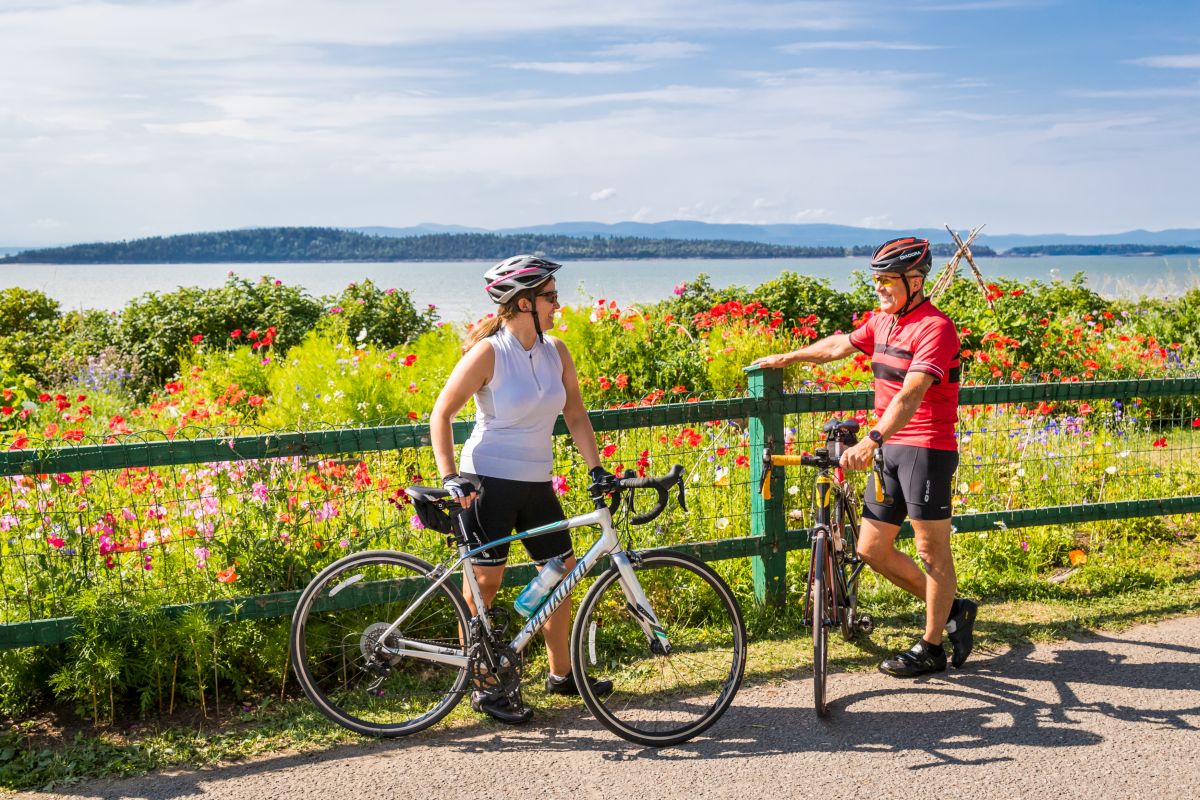
This 40-km loop to the west of Rivière-du-Loup follows one of the most scenic stretches of the St. Lawrence River in the Bas-Saint-Laurent region on Route 132, and then heads inland to historic villages and other points of interest worth slowing down for. The route begins in Kamouraska where you should seek out some fresh fish during your stay. Along the route you will come across bakeries and the Chocolaterie La Fée Gourmande where you can satisfy your sweet tooth. Your bike rides will be fuelled by the region’s culinary flavours and traditions, which are worth savouring. Don’t miss the numerous views of the St. Lawrence during the ride.
Segment: The stretch from Notre-Dame-du-Portage to Kamouraska is 30 km along Route 132. With scenic views of the islands in the St. Lawrence it’s a can’t miss stretch of road in the area.
Bike: These are roads suitable for a road bike but these quiet stretches are suitable for all levels of cyclists so really you can ride whatever bike you are traveling with.
Route: Circuit des Églantiers
Region: Bas-Saint-Laurent
For more information: cyclingquebec.com/en/le-circuit-des-eglantiers
3. Explore wine country
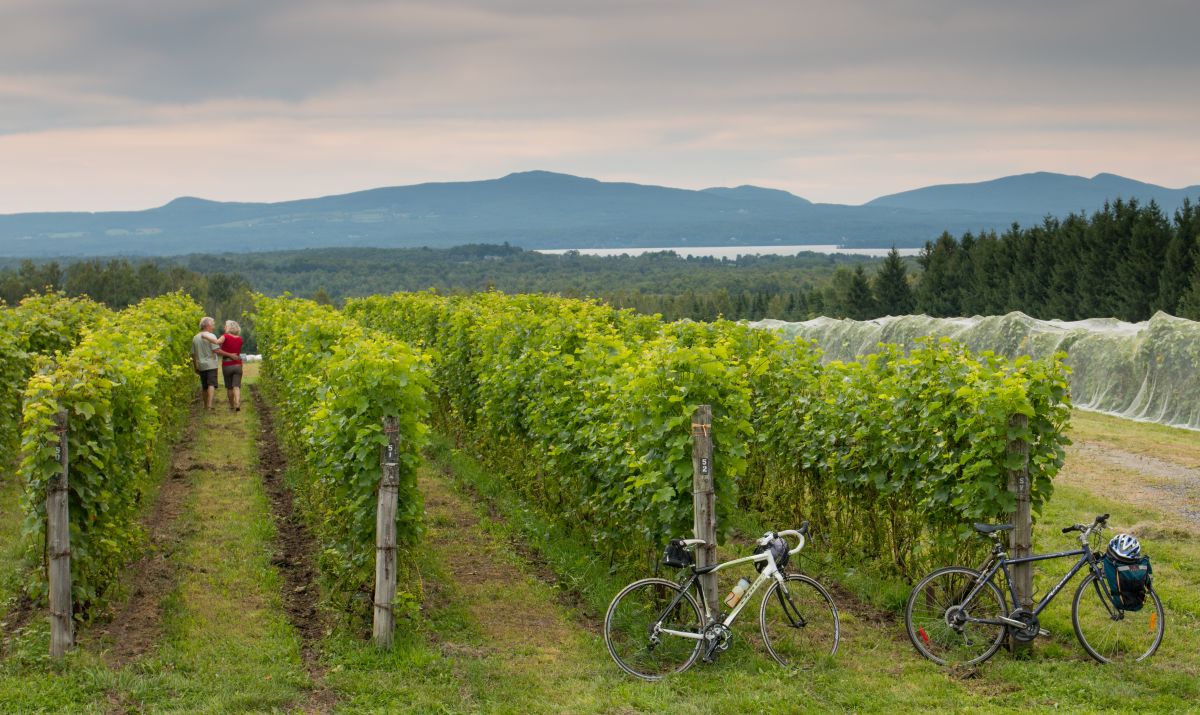
You don’t have to travel to Italy or California for a ride through wine country. For a leisurely wine tasting ride, Québec’s Eastern Townships are home to 22 vineyards that you can visit on a tour of the region on your bike. Just 45 minutes from Montréal, the Brome-Missisquoi Wine Route is 140 km in total that crisscrosses the region northeast of Lake Champlain to Lake Brome and down to the U.S. border. You don’t have to do the whole thing on your wine tasting ride. Connecting many of the region’s vineyards, you can pedal the green hills of the region on your way to sample refreshing rosés and ice wines.
Segment: Following your wine tasting, check out the Centre National Bromont where you can ride the outdoor velodrome which was used for the 1995 Atlanta Olympics. For a more adventurous ride, follow the route of the 100 à B7 event which uses many of the regions beautiful and quiet gravel roads.
Bike: To get from vineyard to vineyard in the most efficient way possible, why not ride your fancy superbike. Of course, shorter routes can be navigated on touring bikes and if you plan to buy a couple of bottles maybe put on some panniers.
Route: The Brome-Missisquoi Wine Route
Region: Eastern Townships
For more information: cyclingquebec.com/en/
4. Experience diverse landscapes and a variety of geography
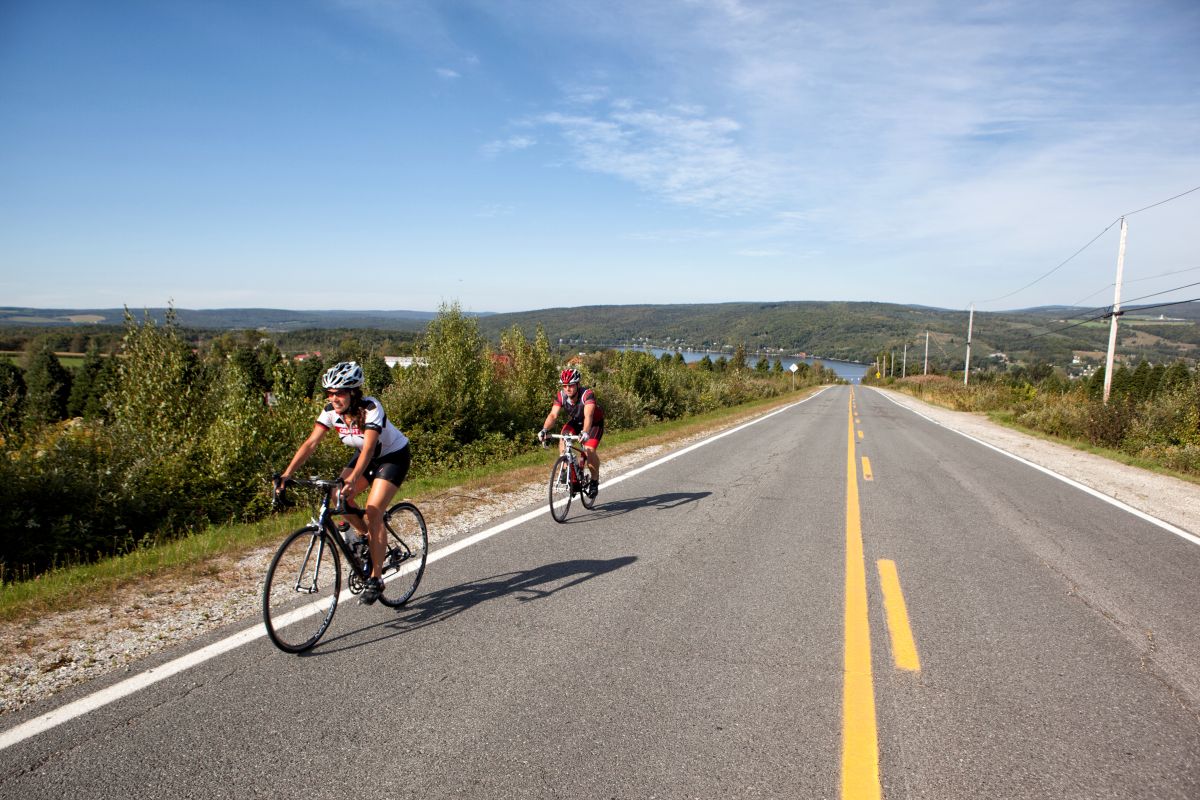
On the South Shore of the St. Lawrence River halfway between Montréal and Québec City, the 347-km Centre-du-Québec Regional Cycling Route takes riders from the Saint Lawrence River to the foothills of the Appalachian Mountains travelling through Drummondville, Nicolet, Bécancour, Saint-Ferdinand and Victoriaville. In autumn, the route is a spectacular way to take in the fall colours. In summer, the rolling hills are lush and green, while the fields that line the St. Lawrence offer views worth stopping to take in. The region has everything for cyclists of all levels.
Segment: During your stay in Victoriaville, ride the steep final climb of the Appalachian Classic race, a 2.5-km incline that averages six percent and leads to the top of Mount Arthabaska. It’s one of the must ride roads in the area.
Bike: A lightweight carbon road bike will get you around this route fastest but any bike you are comfortable riding on some rolling and steep hills with will ensure you have a good day of cycling in the Centre-du-Québec region.
Route: The Centre-du-Québec Regional Cycling Route
Region: Centre-du-Québec
For more information: cyclingquebec.com/en/center-du-quebec-regional-cycling-route
5. Ride through The Laurentians on an old rail line
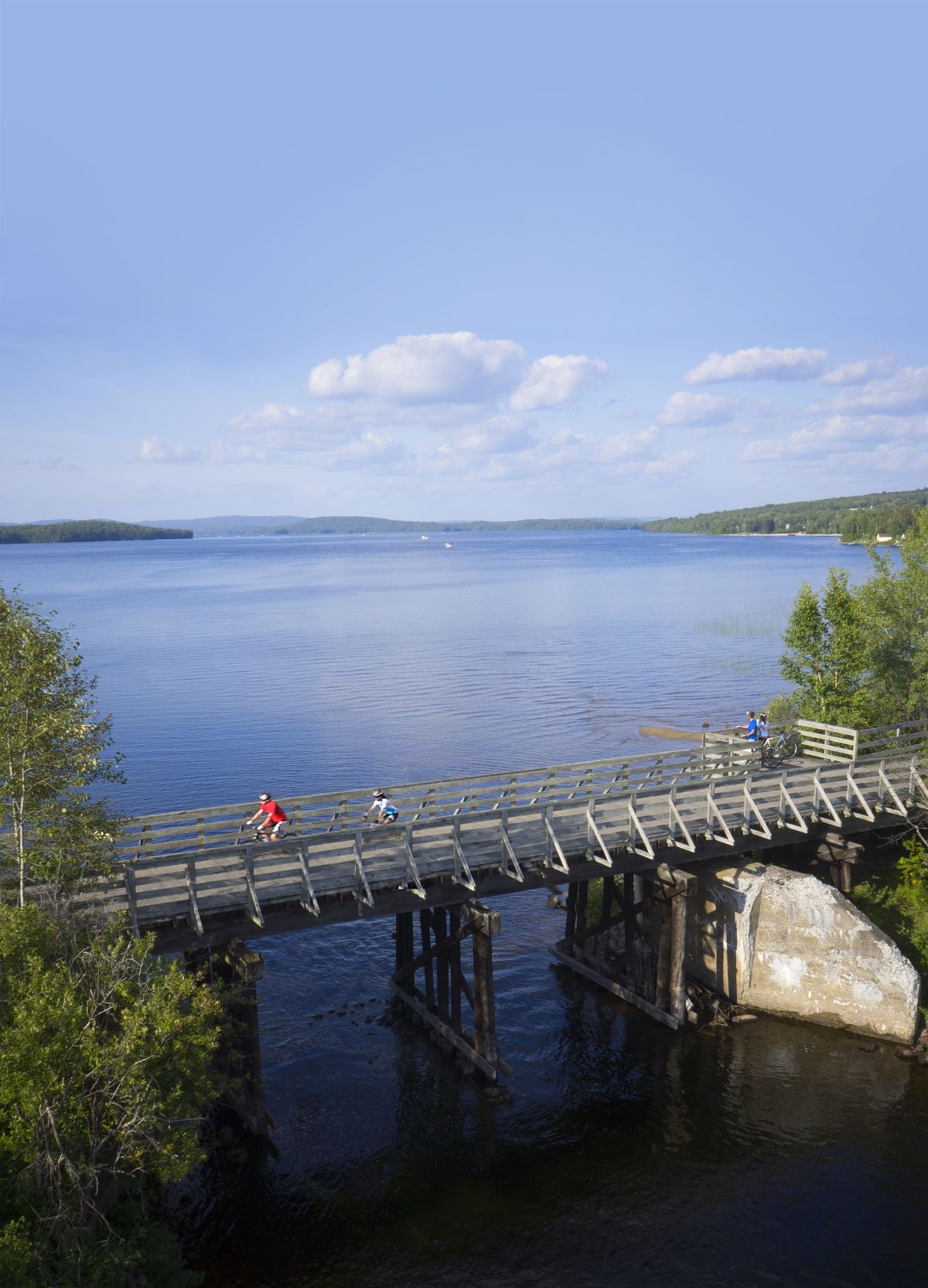
Le P’tit Train du Nord linear park is a beautiful recreational trail that follows an old rail line into The Laurentians. Starting just north of Montréal, it’s easily accessible with points of entry along its length. The cycling path starts in Bois-des-Fillion and ends in Mont-Laurier, making it the longest rail trail in Canada. Historic train stations provide points to fill up bottles and take snacks. You’ll also find information about the rail line with interactive videos and pieces of history that have been preserved.
Segment: This 25-km segment from Labelle to the Village de Mont-Tremblant is a beautiful section to head out on during a stay in the area around Tremblant.
Bike: While you can ride the gravel on skinny tires, a more relaxed option might be a bike with straight handlebars and disc brakes. Clearance for wide or knobby tires will ensure the whole family is comfortable on this leisurely ride along the P’tit Train du Nord.
Route: P’tit Train du Nord Linear Park
Region: The Laurentians
For more information: laurentides.com/en/linearpark
6. Visit Chambly Canal National Historic Site

Just a 30-minute car drive outside of Montréal, cyclists can find the 20 km of recreational trails along the Route du Richelieu. Starting in Chambly, the route is a great way to take in the region’s historical sites such as Fort Chambly, the Chambly Canal and the Old Canadian National Railway Station. The locks of the canal are frequently in operation with recreational boats using them to access the Bassin de Chambly. Parc les Ateliers is the perfect stop to enjoy a picnic with the family. If you plan your visit for August, you can enjoy a sky filled with hot-air balloons during Saint-Jean-sur-Richelieu’s International Balloon Festival.
Segment: For intermediate or advanced riders staying in Montréal, it’s about an hour ride to Chambly. A good portion of the route is on bike lanes, parts of which make up the Route verte.
Bike: The route is all paved and relatively flat so a versatile bike you can put 28 mm tires on is great. If you drove to Chambly, a recreational bike with flat or drop bars is ideal for exploring this nice corner of the province.
Route: The Route du Richelieu
Region: Montérégie
For more information: cyclingquebec.com/en/the-route-du-richelieu
7. Explore Canada’s National Capital Region
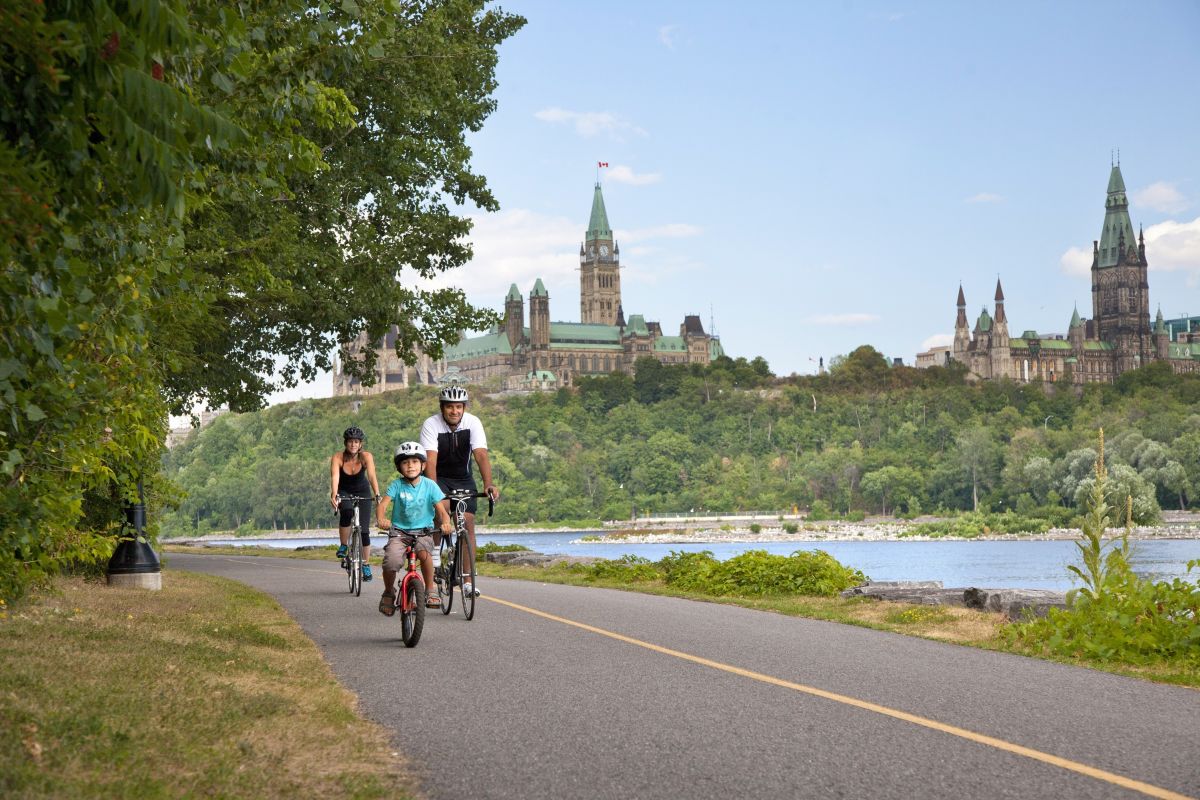
Across the river from Canada’s Parliament Buildings is Gatineau, where the Sentier des Voyageurs Pathway begins. Ride across the river into Ottawa to visit Parliament Hill. The National Capital Region is criss-crossed by the Capital Pathway network where you can stop to visit museums, urban beaches, and ride along paths on three different rivers. Make sure to plan a visit to Gatineau Park with its trails and wide roads that are popular among local cyclists for training and leisurely rides. Climbing up to Champlain Lookout offers a gorgeous view and requires a leg-straining effort.
Segment: The climb to Lac Fortune in Gatineau Park is tough at over 2 km long and averaging nearly five percent. While a more leisurely ride can take you to more popular sights in and around the nation’s capital, this climb in the heart of the park is beautiful and challenging.
Bike: If you want to make efforts in Gatineau Park bring your road bike but exploring the region can be done on bikes of all sorts. Recreational trails in the park, along the rivers and through Parliament are suitable to riders of all skill levels.
Route: On the shores of the Capitale
Region: Outaouais
For more information: tourismeoutaouais.com/en/attractions/voyageurs-pathway/
8. Take a multi-day tour around Lac-Saint-Jean

Take the Saguenay River north from the St. Lawrence and you will come upon Saguenay–Lac-Saint-Jean where you can find some of the most scenic cycling in the entire province. The Véloroute des Bleuets is the only continuous cycling route longer than 250 km around a lake in North America. Along the route, you can visit 15 municipalities and the Mashteuiatsh First Nations community. Take the time to stop at the tributaries of Lac-Saint-Jean and extend your rides to the Véloroute du Fjord to enjoy stunning views.
Segment: Riding around Lac-Saint-Jean is approximately 200 km and is mostly flat with just a few rolling hills.
Bike: A touring bike may be most suitable for a multi-day adventure in Saguenay–Lac-Saint-Jean but there are plenty of excellent roads for training on your road bike and sections of recreational trail around the lake are great for family outings.
Route: Véloroute des Bleuets
Region: Saguenay–Lac-Saint-Jean
For more information: veloroutedesbleuets.com/en
9. A safe way to explore urban areas and green spaces

Montréal’s Lachine Canal is an urban green space that makes exploring the Old Port, the Atwater Market and the many parks along its length accessible to riders of all levels. The path was opened in 1977 and follows the Lachine Canal, which was used by boats to bypass the Lachine Rapids before the Seaway was built. Old warehouses and factories line the route that runs through a number of boroughs along 14.5-km length. There are tree-lined sections that are great picnic spots, which also offer views of downtown Montréal and the St. Lawrence River. For path’s entire length, it’s separated from traffic and only has one street crossing.
Segment: The Lachine Canal is 14.5 km long and is interconnected with many of the islands cycling routes. You can explore downtown, Old Montréal and the Atwater Market.
Bike: The recreational trails can be navigated on a cruiser or recreational bike but more advanced cyclists will frequently use the canal to connect their longer routes.
Route: Canal Lachine
Region: Montréal
For more information: http://cyclingquebec.com/en/montreal
To learn more:
Across Québec, The Route verte here
Bas-Saint-Laurent, Circuit des Églantiers here
Eastern Townships, The Brome-Missisquoi Wine Route here
Centre-du-Québec, The Center-du-Québec Regional Cycling Route here
The Laurentians, The P’tit Train du Nord Linear Park here
Montérégie, The Route du Richelieu here
Outaouais, On the shores of the Capitale here
Saguenay – Lac-Saint-Jean, Véloroute des Bleuets here
Montréal, Canal Lachine here
For a full map of the cycling routes in Quebec visit cyclingquebec.com/en/circuits-map.

